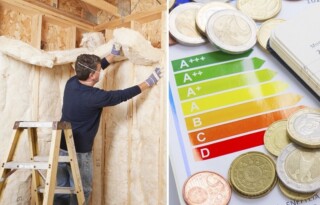Is insulation the only thing that comes to mind when you think of an energy-efficient building? Then it may be time to expand your horizons to reduce your energy bill: consider improving your ventilation, central heating and household appliances as well. Five top-tips for an energy-efficient home.
1. Insulation and air sealing
Energy-efficient living does not stop at insulation. However, everything begins with an excellent thermal insulation of your home. In the cold winter months, insulation helps keep the precious warmth in, while it keeps your house cool in the summer. It is important to insulate every surface – walls, roof, floor, windows, and doors. Other factors, such as the orientation of your house and the presence of awnings also play a role here. Finally, always couple insulation with airtight construction to keep heat loss to a minimum.
2. Ventilation
An airtight building is also important when it comes to the economic and efficient ventilation of your home. In modern homes, you can no longer count on natural ventilation through windows, cracks and crevices, so a mechanical ventilation system is required to enjoy a healthy indoor climate at all times. Choose a cost-efficient ventilation system C or – even better - a system D with heat recuperation.
3. Efficient heating
The third pillar of an energy-efficient home is a state-of-the-art central heating system that provides as much warmth as possible at the lowest possible price. In other words: an efficient central heating boiler. Just as important are the devices that distribute the heat throughout your home, such as radiators, convectors and underfloor heating. The most economical and most comfortable solution is a combination of top quality radiators with underfloor heating.
4. Energy efficient devices and lighting
Central heating is the biggest expense for any homeowner, but of course it does not stop there. Household appliances and lighting are also quite energy intensive. You can reduce your energy consumption by consistently buying appliances with an eco-label. They perform just as well, but consume less electricity. Good examples of this are energy-saving CFLs and LED lights.
5. Green energy
Combine these four pillars with the last and perhaps most important one: renewable energy. You can easily generate power with solar panels on the roof or a water pump in your home. This is sustainable and ecological and in fact costs you nothing. In the long run, you will earn back the cost of installation and maintenance.
